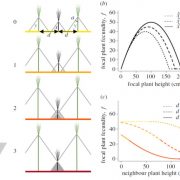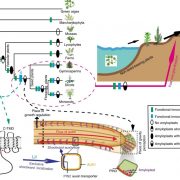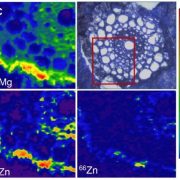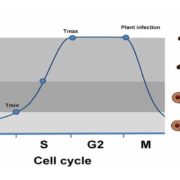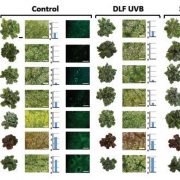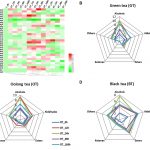Drought conditions reduce root-feeding nematode predator populations (PNAS)
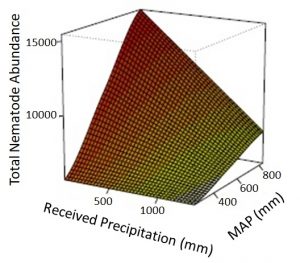 Climate change is expected to cause numerous negative impacts on plant populations. An under considered area that will be affected are the communities of soil organisms that rely on a delicate balance of environmental conditions, particularly in grasslands that receive moderate precipitation (mesic grasslands). A recent study from Franco et al. aims to address how the mean annual precipitation (MAP) affects soil organism populations. To address this, the authors provided fields of arid, semiarid, and mesic grasslands with either more or less water over two years. Following these treatments, the soil organism composition was surveyed to determine which species were prevalent under each condition. The authors found that both major increases and decreases in MAP caused changes in the biodiversity of soil organisms. Furthermore, they found that, under drought conditions, populations of root-feeding nematodes were more abundant. This change was due to a decrease in the population of nematode predators in drought conditions, particularly in mesic grasslands. This research has major implications for the effects of climate change and indicates an additional challenge that climate change presents. (Summary by Nick Segerson) Proc. Natl. Acad. Sci. USA 10.1073/pnas.1900572116
Climate change is expected to cause numerous negative impacts on plant populations. An under considered area that will be affected are the communities of soil organisms that rely on a delicate balance of environmental conditions, particularly in grasslands that receive moderate precipitation (mesic grasslands). A recent study from Franco et al. aims to address how the mean annual precipitation (MAP) affects soil organism populations. To address this, the authors provided fields of arid, semiarid, and mesic grasslands with either more or less water over two years. Following these treatments, the soil organism composition was surveyed to determine which species were prevalent under each condition. The authors found that both major increases and decreases in MAP caused changes in the biodiversity of soil organisms. Furthermore, they found that, under drought conditions, populations of root-feeding nematodes were more abundant. This change was due to a decrease in the population of nematode predators in drought conditions, particularly in mesic grasslands. This research has major implications for the effects of climate change and indicates an additional challenge that climate change presents. (Summary by Nick Segerson) Proc. Natl. Acad. Sci. USA 10.1073/pnas.1900572116


